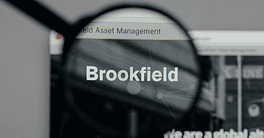COVER STORY: MISSING PIECES
By Michael Shari
Corporations are adding up the costs—and looking at alternatives to increasingly expensive banking services.

It would be hard to find a multinational corporation with a firmer grip on the intricacies of global finance than International Paper, the world’s largest pulp and paper manufacturer. Yet from his vantage point at the company’s sprawling corporate headquarters in Memphis, Tennessee, Errol Harris, vice president and global treasurer of IP, is not looking forward to the year 2013—when banks start complying with strict new Basel III banking rules that will require them to dramatically increase their capital over several years.
“Ultimately, the expectation is that this is going to increase overall costs for corporates and companies,” says Harris. “To the extent that banks are being asked for a lot more capital, they only have two choices at the end of the day—either accept lower returns or find ways to increase their pricing to offset some of those costs.”
But the dilemma that all corporate treasurers face is in anticipating which particular financial services they will wind up paying more for—or earning less from. The Basel Committee of the Bank for International Settlements’ new rules will require all banks —including the 23 that IP does business with—to more than triple their core Tier 1 capital from 2% of risk-weighted assets to a minimum of 7% by 2019. Made up of common equity and disclosed reserves—or retained earnings—core Tier 1 is “the most expensive” type of capital that a bank holds, explains Peter Neu, a partner and managing director at Boston Consulting Group in Frankfurt. As a result, Neu predicts that banks will stop looking at profitability per transaction and start looking more closely at overall profitability per client.
The new rules are intended to shore up the global financial system and prevent a repeat of the debacles that brought down Lehman Brothers and Bear Stearns in 2008. But rather than rejoice at rules that are intended to reduce overall risk in the global financial system, senior managers of banks around the globe that are starting to comply with Basel III are quick to identify a litany of brutal impact points for their corporate clients, ranging from a drop in already-low interest rates on deposits to dramatic increases in interest rates on loans.
Even undrawn lines of credit will become more expensive and difficult to maintain. Banks will be required to treat 10% of short-term lines and 5% of long-term ones as if they were already drawn, according to Neu. The most that clients will be able to borrow from those lines will be 90% and 95% of their outstanding balances, respectively. “You cannot use this cash for other purposes. Before, there was nothing like that,” says Neu.
Déjà-Vu
In one sense, borrowing under Basel III will feel like déjà-vu for corporate treasurers who survived the global financial crisis of 2008, when banks raised their borrowing rates astronomically. Prior to the crisis, banks had charged IP just 10 basis points above the LIBOR rate for a revolving credit facility and 50 basis points to actually draw from it, according to Harris. In 2008 those rates rose to 50 basis points above LIBOR for undrawn credit lines, while the rate to draw from them soared to a breathtaking 300 basis points over. In late July, IP—which has a low investment-grade rating of BBB from S&P;—was about to renew the revolving credit facility at an undrawn rate of 17.5 basis points.
But Howard Bascom, head of global trade finance and credit services at BNY Mellon, says Basel III is unlikely to propel borrowing rates back to the dizzying heights of three years ago, and the impact will not be negative for all borrowers. Strong investment-grade corporations, particularly those with Standard & Poor’s ratings from AA+ to AAA, may actually see their cost of funds fall, particularly for trade-related transactions, he estimates.
Alternatives to Traditional Banking
Expectations of the negative impact of Basel III are so persuasive that corporate treasurers are already considering alternatives to traditional banking solutions. For deposits, they are contemplating opening more fixed-term accounts, which they hope will pay more interest than overnight rates.
 |
|
Bascom, BNY Mellon: Costs may fall for some borrowers |
As they will no longer get lower borrowing rates for short-term debt under the new rules, they are moving to long-term facilities for loans. They are also considering moving at least some of their deposits to better-capitalized banks that are likely to be less impacted by Basel III.
For example, a number of banks in Scandinavia now seeing increased global corporate interest are known to be well-capitalized—and in fact provided a safe haven for many companies, including IP, during the financial crisis of 2008. IP turned to Nordea in Oslo when it needed liquidity during the crisis.
In trade finance, where the liquidity ratio under Basel III would imply a fivefold increase in interest rates, some corporate treasurers are considering taking their business to insurance companies that issue surety bonds covering trade transactions. They are even looking at ways to serve as their own guarantors.
“We might go back to the people who are insisting we have a letter of credit and say, ‘Hey, you know what? This thing is getting very expensive. Either you’re willing to accept a guarantee or whatever from us, or we’re going to charge you more,’” says Harris.
Corporate treasurers soon will have little choice but to resort to such extreme tactics. Deposit rates are already scraping bottom. IP earns only 10-to-15 basis points in interest on the $2.4 billion in cash the corporation has in on-demand and term deposits, and money market funds. Those rates don’t have far to fall, but they will, Harris predicts.
Much of IP’s cash belongs to non-U.S. business units, a fact that helps the company to reduce its reliance on credit lines and, when possible, manage global liquidity needs through internal funding sources.
Risk mitigation will also become more expensive, as pricing for futures, options and other derivatives used to hedge against price volatility in currencies, commodities and other asset classes may increase. Under Basel III, banks must strengthen their own counterparty credit risk mitigation, and the liquidity coverage ratio within the new accord requires financial institutions to hold enough high-quality liquid assets to cover total net cash flows for 30 days. “This is likely to result in increased liquidity charges for banks’ derivatives trading businesses,” accounting firm Ernst & Young said in a recent report.
Experts on financial regulation are quick to point out that the Basel III rules are not yet binding. Technically, they are just recommendations by the BIS to national regulators, and it is up to them to write new rules for banks in their countries to follow. And there is always the possibility that some countries will be more lenient on their banks than others, resulting in inconsistencies around the world in how banks comply with Basel III, notes Bascom.
“What you see in the market now is that banks are cutting down [undrawn credit] lines”
“They are asking ‘How much do we get out of these lines?’ And if the number is negative, they cut the lines” – Peter Neu, Boston Consulting Group
But corporate treasurers may have less time than they think to get used to what is starting to look like the new normal. Banks are not idly waiting for regulators to tell them to comply with Basel III. At a time when virtually all financial institutions are increasingly eager to reassure stockholders and ratings agencies of their credit-worthiness, they are already adjusting their loan books and capital and restructuring their balance sheets in order to start reporting leverage ratios and other financial statistics that comply with the accord.
Many banks have indicated that they plan to comply by 2013—two years before the Banking Committee has stated that new rules should be implemented. According to BIS, implementation is intended to run in several concurrent phases through 2015, 2018 and 2022.
 |
|
Taylor, JPMorgan Chase: Companies will move banks for critical services |
 |
|
Neu, Boston Consulting: Market expectation differs from regulation |
“There is a difference between what the market expects a big bank to do and what a regulator does when it lays down the law,” says Neu. “In each rating agency dialogue and at each investor presentation, the banks will put out a leverage ratio according to the Basel III definition.”
Banks are already considering how to treat different types of clients, with a preference for those who hold deposits with them. “Some of the larger banks in the US lose money on trade finance but subsidize it with some of the other things that they do,” says Bascom. “There are certain product lines we look at from time to time just to make sure the overall relationship is profitable.”
An early casualty of Basel III appears to be undrawn lines of credit, particularly in Europe. “What you see in the market now is that banks are cutting down lines,” says Neu. “They are asking, ‘How much do we get out of these lines?’ And if the number is negative, they cut the lines.”
Estimates of how much it will cost banks to comply with Basel III have been spiraling ever since the Basel Committee announced the results of a study last December on just that subject. The committee cited a total cost to the world’s 94 largest banks of about $769 billion if Basel III had been implemented by December 2009.
On July 20, EU market regulation commissioner Michel Barnier said that complying with the Basel III rules will cost more than 8,300 European banks a grand total of €460 billion ($652.4 billion) in the form of “additional capital.”
According to Bascom, US banks are still trying to get their arms around what it will cost them—and their clients.
A Controversial New Regime For Trade Finance
The flaws of a one-size-fits-all approach
At a time when the global economy faces formidable obstacles to picking up the pace of its grindingly slow growth, yet another impediment looms. A leverage ratio buried under layers of the Basel III banking rules threatens to make trade finance so expensive that it could cut trade finance capacity by 6%, which would result in a 2% drop in global trade and reduction in global gross domestic product of half of a percentage point (50 basis points), according to Ashutosh Kumar, global head of cash and trade at Standard Chartered Bank in Singapore.
A case in point is the impact of the leverage ratio on a letter of credit, a legally binding document that an importer—or an importer’s bank—can request from a bank to guarantee payment for a shipment of goods. If the buyer reneges, the issuing bank pays the full amount.
The leverage ratio treats letters of credit, which have an average maturity of around 100 days—like working capital financing, which can have maturities of up to a year and thus carry higher risk. A typical user of a letter of credit is an emerging-market bank, which by definition would have a non-investment-grade credit rating in line with its home country’s sovereign ratings.
For such a client, Basel III would ramp up the total risk weighting on a letter of credit to a whopping 127.3% from just 25.5% currently, says Howard Bascom, head of global trade finance and credit services at Bank of New York Mellon. That implies a fivefold increase in pricing.
“The question now is, can emerging markets afford to buy from the U.S. with all these increased costs?” says Bascom.
Bankers argue that the Basel Committee’s one-size-fits-all approach to this rule change is flawed because letters of credit are backed by goods as collateral, are endowed with various triggers to protect banks and traditionally have very low default rates.
Trade finance is already a low-margin business, bankers complain, noting that the new rules would raise the cost of issuing letters of credit to the point where they would be unprofitable. Some banks have threatened to exit the business altogether, forfeiting it to large-scale banks that can afford to spread their losses around. The result would be a reduced availability of trade finance facilities and a damper on free trade, says Bascom.
“A corporate in the United States is not going to get out of the business of importing because his bank no longer handles letters of credit,” says Dan Taylor, executive director of global market infrastructure at JPMorgan Chase in New York. “He is likely to look for another bank to do that process.”
JPMorgan is one of a few large banks that command the scale required to stay in the trade finance business regardless of what the new rules look like, says Taylor. The bank claims to be the largest issuer of letters of credit in the US, with $39.9 billion outstanding as of December 31, 2010.
Another bank that is in a position to profit from the stresses of Basel III is BNY Mellon, which has a large back-office business that serves small and midsize banks that prefer to outsource their trade finance business.
Under Basel III, Bascom expects his bank to win more outsourcing business from regional banks across the U.S. that now offer trade-finance services to small and midsize companies for the sole purpose of bundling them together with cash management, mortgage financing, payroll and other services.
Of course, Kumar’s dire scenario for global trade assumes that the leverage ratio will be implemented as scheduled by the Basel Committee in 2018. Yet it’s not a foregone conclusion that this will happen. The committee has already moved the leverage ratio on trade finance from the Pillar 1 rules, which raise minimum capital requirements, to the Pillar 2 rules, which are for information purposes.
Having gathered recommendations from financial institutions around the world, the International Chamber of Commerce in Paris is negotiating with the Basel Committee for a compromise on the leverage ratio, which could be good news for global corporates.



